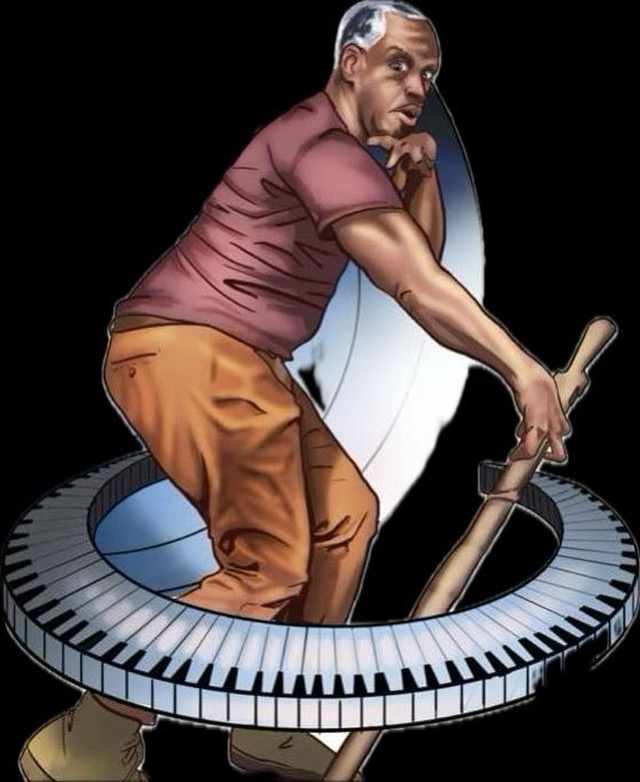Changing the Framing
I’ve witnessed when many scholars and even many activists talk about the intersectionality of race and disability it most of the time begins with the oppression and the lack of need of people of color with disability meaning that Black disabled people are mainly seen as lacking access to services, health benefits and high rates of unemployment and not in higher educational arenas. By mainly looking at disability through the above viewpoints is like only looking through our oppressor’s perspective to get this intersection, which is another reason why disability is constantly looked at only through a stigma viewpoint that continues to reject disability as an identity in the Black community.
I push back on that by proposing a more empowering way to view the “intersectionality” (my writing here, the reality) of Black people with disabilities by starting with the culture like music, resistance of Black disabled people and creativity that came out of oppression and surviving. I look at times of raw discrimination that forced a lot of Black disabled people to come up with creative artistic solutions to make money, to help others to escape oppression and used their writings to get attention from people in power. I wrote my explanation and back up my argument in my 2023 Masters Thesis on page twenty-six that was entitled, Krip-Hop Nation: Community-Based Education at the Intersection of Blackness & Disability as follows:
“I have leaned towards the academic work of Dr. Tommy J. Curry, who is the author of the groundbreaking book, The Man-Not: Race, Class, Genre, and the Dilemmas of Black Manhood (2017) and has written about Black men with disabilities also Dr. Tamari Kitossa who invited me to co-write a chapter, “A Krip-Hop Theory of Disabled Black Men: Challenging the Disabling of Black America.” Kitossa and Moore also resists the killing and erasure through the arts and self-empowerment in his 2022 book, Appealing Because He Is Appalling: Black Masculinities,Colonialism, and Erotic Racism, and theorizes how the Black community can rethink disability.
From the perspective of a Krip-Hop theory of disabilities, we think PTSS (Post-traumatic stress syndrome) is important for helping us to think about disabilities differently in the African American context. Rather than disabilities being seen as a sign of a moral stigma (Goffman, 1963) or a signifier of the projected anxieties and fears that able-bodied people project onto people with disabilities, a Krip-Hop theory says that African Americans should place disabilities at the heart of our economic, cultural, social, and political life (Moore & Kitossa, 2021, p.214-215).”
I look at Black disabled people like Elias Hill, Cecil Ivory, and Al Hibbler, all three helped to lead Black people in their times and in their own ways. Not only individually, we can look at the activism of Rahsaan Roland Kirk who was a Black blind Jazz musician and he led the Jazz & People’s Movement that was pushing for more Black musicians to be on Television, especially night talk shows. By using this cultural empowering “intersectionality” of Black and disability gives an opportunity to erase the stigma of being related to disability, it tells our own activism and culture making history going through oppression with Black disability historical lens with a mission to build on Black disability history, cultural expression and Black disabled long story of activism.
Most of the times when disability academic scholars say that race and disability are linked together they would start with our oppression but don’t look at what was created during that oppression thus leaving the reader in the hands of the oppressors. In my argument this approach leave Black community and more importantly Black people with disabilities seen as a deficit and always being oppressed aka not in an empowering role increasing the stigma and never getting to seeing disability as a historical, political, cultural artistic identity that holds power, and critical advancements that deserve to be studied, pass down to upcoming generations of Black & Black disabled people and communities.
My argument once again goes back to what I have pointed out in my masters’ thesis, the work of Gloria Ladson-Billings where I quote:
“I did not realize it at the time, but I was asking a fundamentally different kind of question. Instead of constantly asking what was wrong with poor, Black children, I wanted to know what was “right” with poor, Black children and what happens in classrooms where teachers help them succeed on a regular basis” (Ladson-Billings, 2009).
Learning from Billings, for myself, instead of constantly reading and hearing the oppression of Black disabled people, I want to know the contributions of Black disabled people during and coming out of our oppression in our communities, throughout history and what happens in the classrooms and in the community where teachers, parents and community leaders help succeed on a regular basis. To put my argument into action it would take a blending many theories into steps like the blending of Gloria Ladson-Billings’ Culturally Relevant Pedagogy, Culturally Relevant and Culturally Sustaining Hip HopPedagogies, Disability Rights’ Models, Disability Justice and Poverty Scholarship all wrapped up in Krip-Hop Theory. What would that look like? Would that be helpful? And how would I/We Black Krip these theories without losing our own identity and radical politics?
To Be Continued!!!!!!!!!
